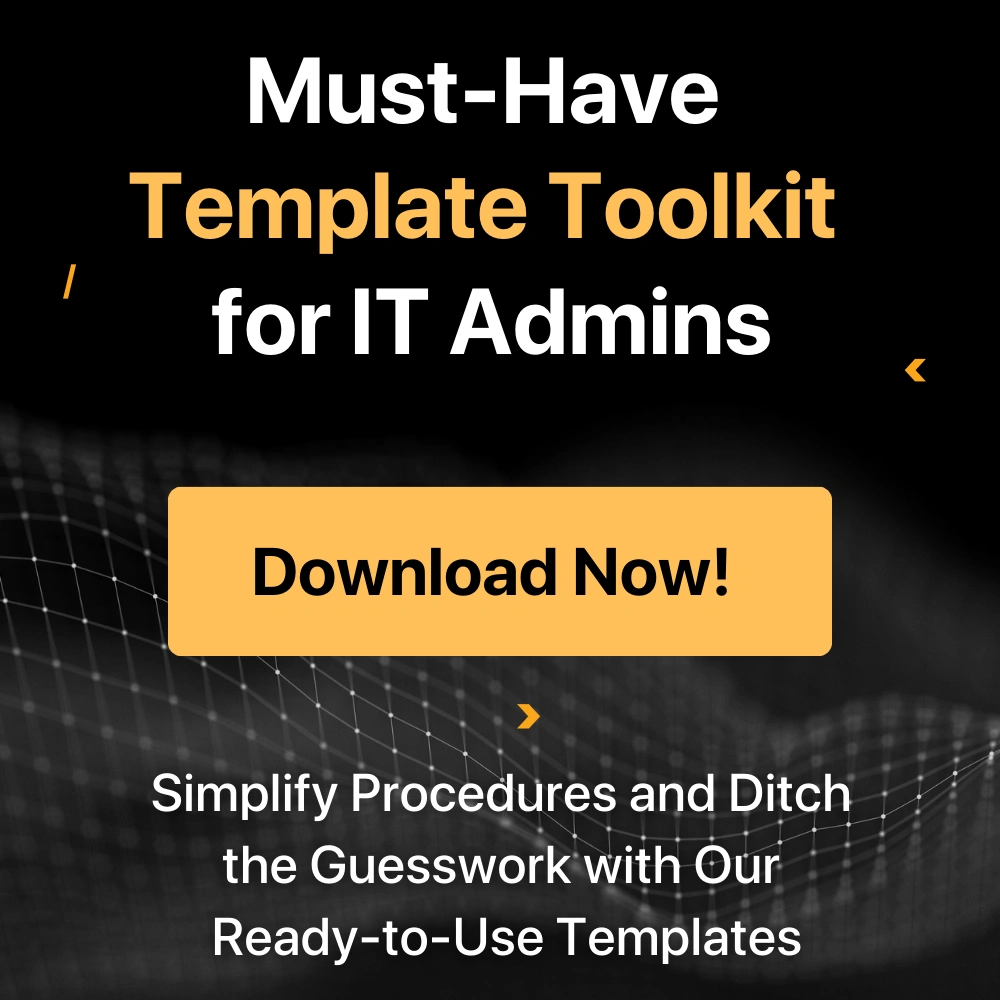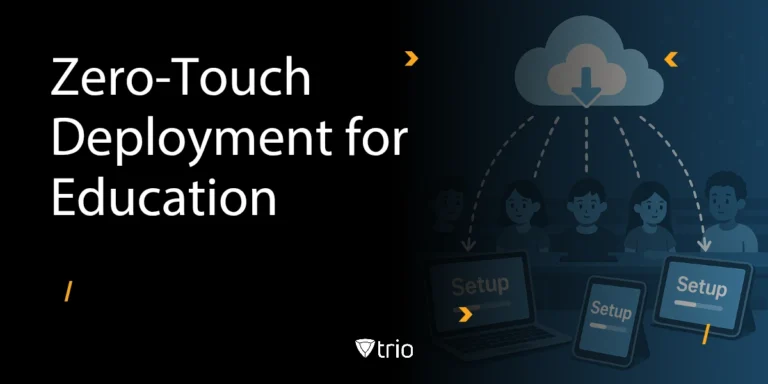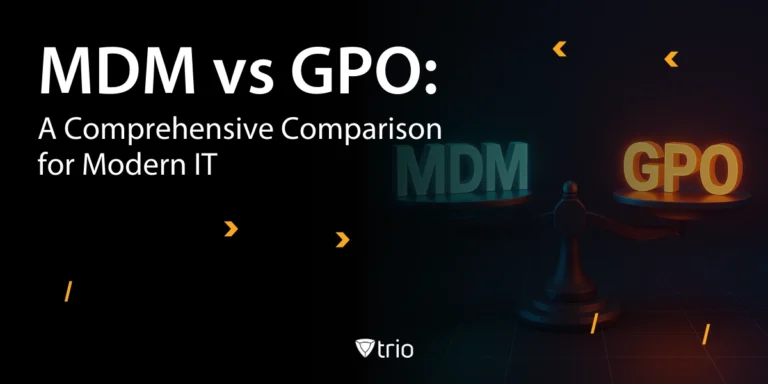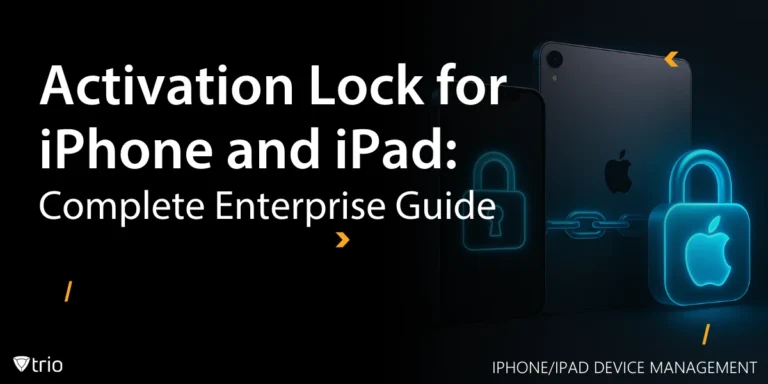In today's complex business environment, managing relationships with vendors and suppliers is crucial for organizational success. According to Grand View Research, “The global vendor risk management market size was valued at USD 7.27 billion in 2021 and is expected to expand at a compound annual growth rate (CAGR) of 15.0% from 2022 to 2030.” An effective Vendor Management Policy helps ensure transparency, accountability, and compliance while mitigating risks and optimizing performance. This blog post will guide you through the essential components of a Vendor Management Policy and provide a downloadable template to help you get started.
📋 Vendor Management
TL;DR
Essential if you:
- Use MDM solutions
- Rely on SaaS/IT vendors
- Outsource device operations
Key Benefits:
Why Vendor Management Matters for Device Management
In today’s fast-moving business world, companies are outsourcing more than ever. IT, endpoint security, device logistics, cloud MDM, and app management are increasingly handled by outside vendors. According to Grand View Research, the global vendor risk management market was valued at $7.27 billion in 2021 and is projected to grow at a CAGR of 15% until 2030.
But every new vendor introduces potential risk—be it service outages, data breaches, regulatory violations, or supply chain disruptions. For organizations managing a fleet of mobile devices, vendor management isn’t just good governance; it’s business-critical.
Key reasons a policy is crucial for device management:
- Vendors may access sensitive device data, user information, or business applications.
- Device or SaaS outages at a vendor can instantly halt your operations or leave you non-compliant.
- Third-party lapses (e.g., in data protection or incident response) can become your company’s problem—fast.
Example:
If your MDM vendor’s cloud platform is breached, your organization could face a data leak impacting all managed devices—potentially triggering fines or regulatory actions under GDPR, HIPAA, or other laws.
Core Components of an MDM Vendor Management Policy
A great vendor management policy does more than file contracts. It’s an actionable, living document that covers the full vendor lifecycle—from selection to exit.
- Vendor Selection & Due Diligence
- Evaluate vendor credibility: Check references, reputation, certifications (SOC 2, ISO 27001, etc.), and financial health.
- Security posture: Ask for penetration testing, data protection policies, and compliance audit reports.
- Technical fit: Ensure compatibility with your device OS, enrollment methods, and integrations.
- Contract Negotiation
- SLAs: Set clear service levels for uptime, support, incident response, and change management.
- Data ownership and privacy: Specify who owns device data, how it is stored, accessed, and deleted.
- Right to audit: Reserve the right to audit vendor operations and security controls.
- Termination and transition: Define exit clauses, data return or destruction, and migration support.
- Performance Monitoring
- KPIs: Monitor metrics like ticket resolution time, device uptime, compliance reporting, and support satisfaction.
- Regular reviews: Hold quarterly or annual business reviews with vendors to discuss performance and improvement areas.
- User feedback: Collect feedback from IT, end-users, and business stakeholders on vendor effectiveness.
- Risk Mitigation
- Ongoing risk assessment: Schedule periodic vendor risk reviews, especially after mergers, incidents, or compliance changes.
- Insurance: Require vendors to hold appropriate cyber, liability, and business continuity insurance.
- Business continuity: Ensure vendors have disaster recovery plans that align with your needs.
- Compliance & Auditing
- Audit rights: Perform scheduled or surprise audits, especially for vendors handling sensitive device or user data.
- Remediation plans: Define clear steps for fixing vendor non-compliance, including timelines and penalties.
- Regulatory updates: Require vendors to inform you of any changes that could affect compliance (e.g., new data centers, policy changes).
- Termination & Transition
- Plan for offboarding: Set procedures for data retrieval, device wiping, and secure destruction.
- Continuity: Require a minimum notice period and support during migration to a new vendor.
Vendor Management Use Cases in MDM
- Cloud MDM Providers:
Ensure MDM platforms provide robust encryption, audit trails, and GDPR/SOC 2 compliance. Require third-party penetration testing and full incident response plans. - Device Logistics Partners:
Mandate secure device shipping, asset tracking, and chain-of-custody processes. Require written confirmation of device wipe/reset before disposal or reuse. - App Developers/Integration Vendors:
Enforce secure SDLC (Software Development Lifecycle), API security, and prompt vulnerability patching for any apps or connectors used on managed devices. - Managed IT Services:
Set SLA-backed guarantees for device onboarding, deprovisioning, remote support, and compliance reporting.
Best Practices and Common Pitfalls
Best Practices
- Maintain a centralized vendor inventory—include all MDM, device, app, and SaaS partners.
- Involve IT security, legal, and compliance in every step of vendor evaluation and onboarding.
- Conduct annual vendor risk assessments—update due diligence when vendors or regulations change.
- Include exit and migration plans in every vendor contract to ensure smooth transitions and data continuity.
Common Pitfalls
- Failing to document vendor access to sensitive data or device controls.
- Neglecting to monitor and review vendor SLAs and security posture post-contract.
- Relying solely on vendor reputation instead of hard evidence and documentation.
- Overlooking new compliance requirements that apply to third-party providers.
Get Your Free Vendor Management Policy Template
Ready to take control of your vendor relationships?
It includes due diligence checklists, model contract language, monitoring guidelines, and transition plans—tailored for organizations with large or growing device fleets.
Conclusion: Streamline Your Vendor and Device Management
Mobile device management and vendor management are two sides of the same coin for modern businesses. Every new tool or service you use—whether for endpoint security, app deployment, or device logistics—brings opportunity and risk.
A clear, actionable vendor management policy will help you select the right partners, hold them accountable, and minimize business disruption from vendor issues.
Proactively managing vendors protects your business, ensures regulatory compliance, and delivers better outcomes for your end users and IT teams.
Want to simplify your device management?
Request a free demo of Trio MDM today!
Get Ahead of the Curve
Every organization today needs a solution to automate time-consuming tasks and strengthen security.
Without the right tools, manual processes drain resources and leave gaps in protection. Trio MDM is designed to solve this problem, automating key tasks, boosting security, and ensuring compliance with ease.
Don't let inefficiencies hold you back. Learn how Trio MDM can revolutionize your IT operations or request a free trial today!





